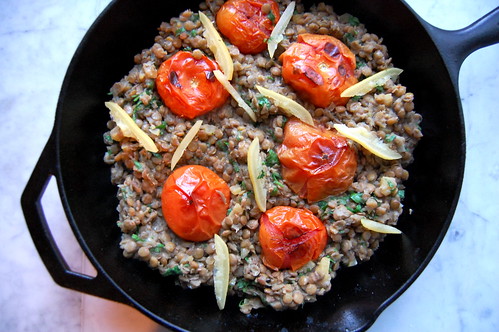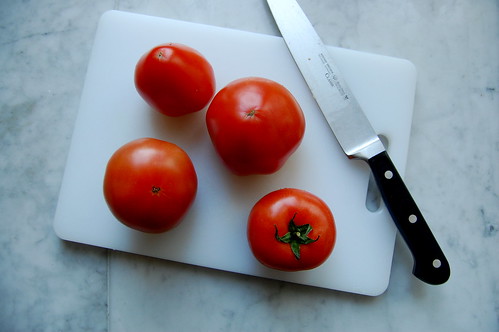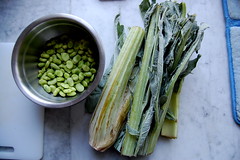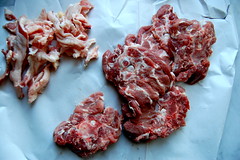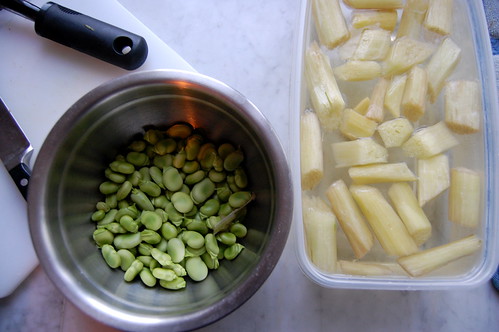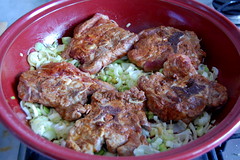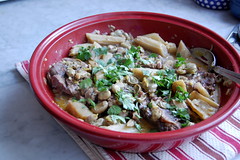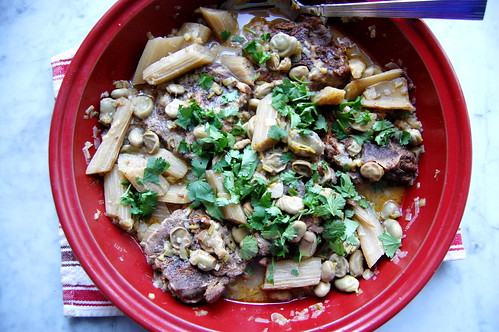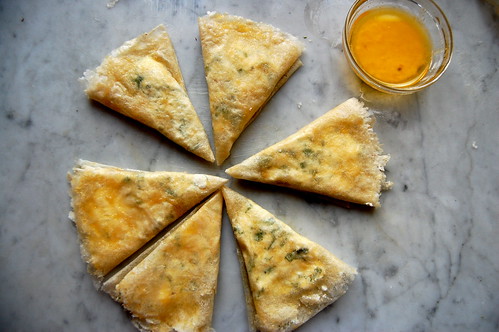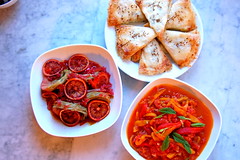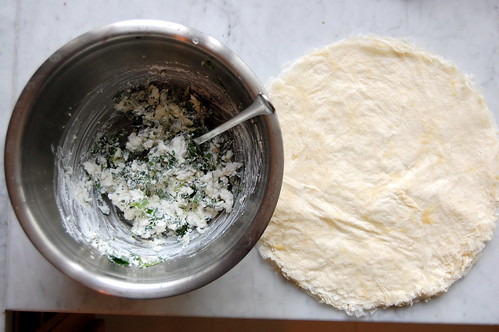
Let's just get one thing out of the way up front: tongue is not a photogenic food. I mean, you probably could have guessed that, but still, it kind of resembles an old shoe when cooked. There is a reason that shoe leather is a pejorative term for food, which I will attribute to the total lack of tongue available in America. But (and I realize that this is a big BUT for some of you), tongue can be quite delicious when done well.

And you know what? I'm one of those people who's kind of squeamish about eating tongue. Luckily, that's why I have Paul. Paul readily orders veal tongue whenever it is on a menu (he's eaten it in Oaxaca in green sauce, in Algeria in tomato sauce, in Paris, etc.) The one preparation where I do quite like tongue is in a sandwich or a taco. When I lived in Damascus Umm Hana would shred tongue, which she cooked in a pressure cooker, and then put it in a sandwich with some of the local Syrian string cheese.
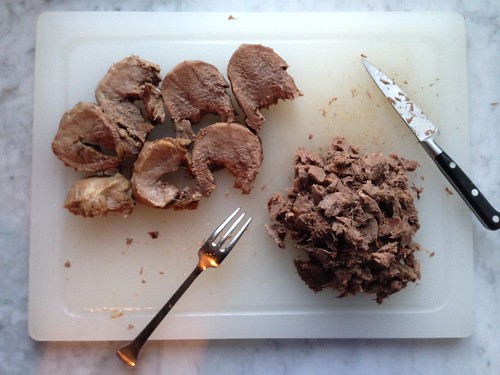
Since Paul likes tongue, I've been meaning to recreate this shredded tongue sandwich for approximately, oh, five years now? And that's how we ended up here today. If you have a bit of time on your hands this recipe is a snap to make. Since tongue yields quite a bit, I make the tongue two ways: the nice thick part of the tongue I slice into rounds and then you can serve it in tomato sauce for dinner. The thinner part of the tongue I shred for sandwiches. If you can get good Nablusi string cheese, the kind with Nigella seeds in it, it is great in the sandwich. Otherwise, feta works quite nicely.
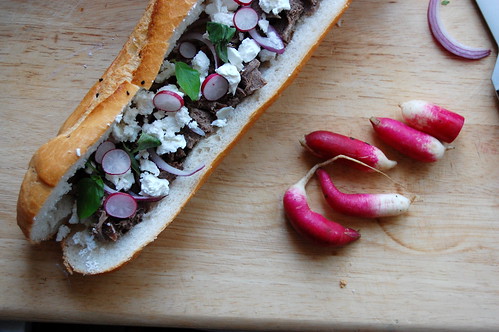
Shredded Veal Tongue Sandwich
The key recipe here is for how to prepare the tongue. Obviously, I hope you readers know how to put together a sandwich. You can mix up the tongue in tomato sauce by adding some cumin or some olives.
for the tongue:
1 veal tongue, rinsed well
1 orange, quartered
3 tablespoons salt
4 garlic cloves, smashed
a bit of thyme sprigs, peppercorns, anise seed (or whatever is on hand)
for the sandwich:
2 small baguettes
string cheese or feta cheese
mint leaves
sliced radishes
sliced tomatoes
red onion slices, soaked in some lemon juice to remove sharpness
olive oil, for drizzling
Aleppo pepper or red pepper flakes
for sliced tongue:
tomato sauce of choice
1. Rise the veal tongue well and place it in a pot and add water to cover. Bring the water to a boil and then lower to a brisk simmer. Let the tongue simmer for 1 hour. Remove from the heat and discard the water.
2. Add the orange, garlic, salt and aromatics to the pot with the tongue and cover with fresh water. Bring to a simmer again, and let the tongue cook for 2 more hours. Test the tongue for tenderness. Drain the tongue and set aside to cool. (I discard the broth.)
3. When the tongue is cool enough to handle, peel the skin off the tongue and discard. It should peel easily. There is an underside to the tongue, where it attaches to the mouth, you want to trim away and discard this part (it is edible but chewy). There are two tendons that run through this underneath area, you want to be sure to cut out and discard these two tendons.
4. Divide the tongue roughly in half, between the thick part and the thinner part. Slice the thick part of the tongue into rounds and set aside. For the thinner part of the tongue, cut up or shred the tongue using a fork and knife (as if you were shredding pork barbeque). Set aside the shredded tongue separately.
5. For the sandwich: assemble the sandwich using the ingredients listed.
6. For the tongue in tomato sauce: Make or heat up your tomato sauce in a pan. Add the tongue slices and allow to warm thoroughly. Serve immediately.







